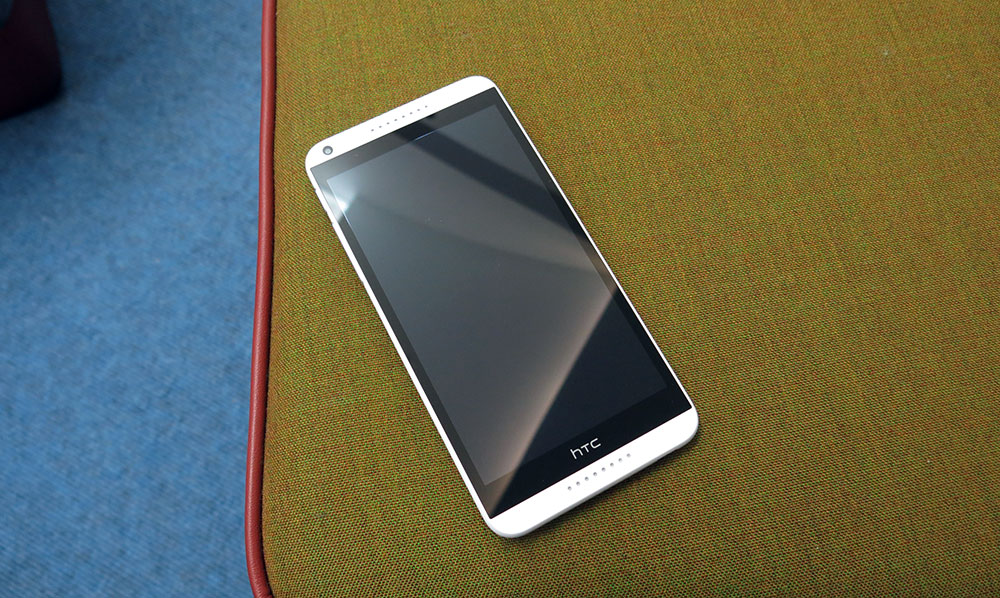
There’s long been a split in the market between the “flagship” phones manufacturers launch with much pomp and circumstance like the Galaxy S5 or One (M8) and the second-tier devices like the Galaxy Ace or F Series. While expensive high-end phones allow manufacturers to show off their latest and greatest technology, many of them are keenly aware that the real money in the market is in the midrange.
Devices with “good enough” specs have become the new battleground, and midrange phones have become top-selling products for a number of manufacturers. Motorola‘s Moto G is their best-ever selling devices, while phones imported by Aldi Mobile sell out in a matter of days. We’ve even heard from LG how they managed an almost complete reversal of fortune after some early Android missteps by focusing on releasing quality devices at a low price.
It’s tempting to say that the trend started with Google’s bargain pricing on the Nexus 4 at the end of 2012 (and continued with the Nexus 5), but it seems more likely that component pricing and better manufacturing processes has brought about an increase in quality of the second-tier handsets. Couple this with the seemingly incremental, evolutionary increases in performance seen at the high end of the market and we’re seeing a midrange that’s catching up to flagship devices at a rapid rate.
This trend brought about some neat handsets in 2013, although the temptation was still there to discount them from daily use in densely-populated urban areas due to 3G-only data connectivity. In 2014 we’re seeing a number of new, budget-priced handsets that now feature LTE connectivity and a no-frills approach that results in solid, likeable phones with decent specs and performance at a price that won’t break the bank.
It’s into this arena that HTC now steps, with its rejuvenated Desire line hitting Australian retailers in recent months. While we’ve seen a number of smaller handsets that echo the iconic design of the HTC One, it’s the Desire 816 that’s attracted the most attention. HTC has delivered a phablet-class device with a 5.5-inch 720p display, BoomSound front-facing speaker design and LTE connectivity in a device that comes in at just under the $400 price point. It also features HTC’s likeable Sense Android customisations but eschews the One series’ UltraPixel cameras for a more straightforward rear camera, although even that’s pushing the budget specs weighing in with a 13MP sensor.
- Great price point
- 4G LTE connectivity
- Big, bright 5.5 inch screen
- Phone performance suffers under load
- Camera is a little lackluster
- Build quality isn’t as good as we expect from HTC
Hardware
At first glance, the Desire 816 doesn’t seem far removed from the flagship HTC One series. It’s got the black surround inset screen on the front with the M8’s controversial black bar making a return alongside front-facing BoomSound speakers and similar rounded edges that belie its design heritage, with one difference – it’s huge. The 816 is much larger than either of the main One phones, and really isn’t far away from the 2013 HTC One Max in size and could probably even be confused for it at first glance.
The all-plastic construction might sound off-putting at first, but it’s not a bad thing. The front and sides are constructed from a single piece of matte plastic (white, in the case of our review unit – a black version is also available), and a glossy white piece is attached to form the back.
Buttons are all on the left edge this time around – power at the top, with a volume rocker just below. On the right you’ll find a large slot that covers two SIM slots (of which, one has a blank SIM fixed in position) and a Micro SD slot. The flap is purely aesthetic, too – it’s not sealed to keep out water, or anything fancy like that. You’ll also find the 3.5mm headphone port just off-centre on the top edge, and a Micro USB port close to the right side on the bottom.
The phone’s light to hold, but not too light. It weighs in at 165 grams, which seems fair for a device packing a 5.5 inch screen. That screen isn’t the defining aspect of the phone’s size, though – as with the company’s One phones, there’s a considerable bezel around the screen and when you add the extra space for the BoomSound speakers you’re looking at a considerably larger phone. It’s actually only just about 1cm off the width and height of Samsung’s Galaxy Mega 6.3 (but quite a bit lighter), and that thing has an enormous screen.
One-handed operation? Forget it, but that’s not a surprise with a phone this big. Still, it’s got to sit in one hand or the other. In your left hand, your thumbs will fall on the volume rocker and in the right it’ll be your index finger. The power button is always just a little out of reach either way, so you’ll adjust your grip slightly when it’s time to power off the screen. That’s not too concerning, though – the matte plastic provides a decent grip on the sides of the phone, and the glossy back provides a surface that’s easy to move the phone around while keeping control of it in your hand.
Build Quality
With its two-piece plastic construction, the Desire 816 is a far cry from the “single piece of aluminium” body design HTC has become so well known for on its One phones, and while the weight is pleasant enough, the construction doesn’t come without its drawbacks.
In handling the phone, I found that the body creaked a lot, and would noticeably flex under strain. There’s also a slightly concerning hollow echo when you tap the middle of the back of the phone, which makes it feel like something isn’t attached properly. The white plastic also shows up scuffs and marks a little easier, but they’re easily cleaned off with a little effort.
Ultimately, these are niggles. You’re really not going to notice a problem unless you go looking for one.
Screen
HTC’s packed a decent 5.5-inch, 720p screen into the Desire 816. At a pixel density of about 267 PPI, it’s about the largest physical screen size I’d like to see 720p stretched to before going up to a 1080p display.
The screen is bright enough to look at, but it won’t be blinding anyone. There’s decent viewing angles on offer, and excellent colour reproduction. The display is well-suited to the bright colours on display in HTC’s Sense software. A solid performer, it doesn’t amaze – but then, it doesn’t have to.
Battery life
We’ve come to expect decent battery life from HTC in the last couple of years, and with the opportunity afforded by the larger phone body we expected to see a large battery inside. It’s somewhat disappointing then to see that the phone is only packing 2,600 mAh when companies like Sony are breaking that 3,000 mAh barrier. It’s the same capacity as the company’s own One M8, and makes you wonder whether they might in fact be using the same part to save some costs.
Fortunately, the Desire 816 seems to sip battery power, and didn’t have a problem making it through the day with modest use (some browsing, emailing and hangouts). Once you put it under some stress (ie, Ingress), all bets are off – but this isn’t unusual.
The phone’s battery life is a product of both the 720p display and lower power chipset on offer in the device, so the trade-off is that while you’ll be able to do plenty on the phone you won’t be able to truly push it hard.
Of course, there’s also some additional software tricks that HTC can pull off like its “Extreme Power Saving Mode”, which extends your battery life basically at the cost of your actual “smart” phone capabilities (you can’t run any apps, but can still use the phone for calls and SMS). There’s also a slightly less extreme Power Saver, which gives you options to conserve CPU usage, reduce the display brightness, turn off vibration and restrict data usage while the screen is off.
Connectivity
The phone supports 4G LTE data on all Australian carriers, with the exception of Optus’ 4G Plus network running at 2300 Mhz. It’ll even support 700 Mhz spectrum when it hits wide release in early 2015.
There’s also Bluetooth 4.0 support, GPS/GLONASS (which demonstrated acceptable precision while playing Ingress) and of course the phone packs Wi-Fi in 802.11 b/g/n flavours. Curiously for a handset released in 2014 though, the phone couldn’t see my 5 Ghz Wi-Fi network at home.
Sound
The Desire 816 packs HTC’s front-facing BoomSound speakers in a simpler design than we’ve seen in the 2013 One range and 2014’s One M8. The top and bottom speaker grille is a simple series of 8 dots in the plastic on the front of the phone, and the speakers found below that are more than capable of blasting out sound at a decent volume.
The 816’s speakers don’t sound great at maximum volume (or close to it), but they’re plenty loud enough to provide background music while you work or study. You wouldn’t want to rely on them to rise above a lot of background noise, but it’s a phone – not a boom box.
The front-facing speakers also come into their own when you’re playing a game or watching a video, as you won’t worry about accidentally covering the speaker with your hand while holding the phone, and the speakers are facing towards you, instead of the rest of the room.
It’s the first time we’ve been able to give this kind of tick to a phone that doesn’t bear the HTC One name, and it’s a good sign of things to come if HTC can continue to bring features such as BoomSound down from its flagships into other lower cost phones.
Performance
The Desire 816 is powered by a quad-core Qualcomm Snapdragon 400 and an Adreno 305 GPU. It’s not the fastest out there, but it doesn’t have to be – it’s only pushing a 720p screen, after all.
In general use, the phone performs well. Apps install and open quickly and the phone is very responsive. Sounds great, but this falls down under certain circumstances.
It seems that when the system gets particularly busy, either from a network throughput or a CPU cycle perspective, things start to go a bit awry. I noticed while playing Ingress with comms range set to 20km (which means more data flowing into because I’m seeing events from a wider radius around me) that the network connection would frequently drop and reset. When I reset the comms range to 5km (less events, less data) then network connection remained stable. Similarly, on a Skype video call with my parents they told me that my video would drop out occasionally and go black.
Camera
HTC has been beating the UltraPixel drum so much that it’s surprising to see a more traditional smartphone camera packed into the Desire 816. but the 13MP unit packed within is a pleasant departure for the company that won’t go above 4MP in its flagship phones. The 816’s camera comes with an LED flash that you won’t want to use (it washes everything out, because it’s an LED flash), and can record video at 1080p.
HTC’s camera software has evolved over the last couple of years to be some of the best in terms of ease of use and features packed in. The 816 is running much the same software as the M8, though obviously without the Duo Camera features but it still has a number of neat effects like skin smoothing, face lighting and eye enhancement when editing a photo “in post”.
You’ll get manual control over ISO (200, 400, 800 and 1600) and exposure (-2 to +2 in 0.5 increments), there’s a number of preset filters you can apply to your photo in real-time and there’s configuration for things like an on-screen grid, post-capture review time and functionality assigned to the volume keys.
The camera performance is acceptable in normal lighting conditions, and even seems to capture action fairly well (for example, check out the water fountain in the example shots). This isn’t anything surprising for a phone camera in 2014 – we expect to be able to capture everyday scenes well, so the 13MP resolution is actually quite an unexpected bonus on this front. Eagle-eyed readers might have noticed few photos from the 816’s camera sneaking into reviews in the last couple of weeks.
“Acceptable” performance makes it sound like I’m damning the camera with faint praise, and that’s probably fair. I did notice a tendency to overexpose when outdoors on a sunny day (cloudy day, no problem – pro tip) and occasionally indoors as you’ll notice on the Transformer picture below. The depth of controls available can help compensate for this overexposure, but the fact that the defaults seem set a little too sensitive is cause for concern. HDR mode doesn’t seem to help much either, usually producing a white sky instead of a deeper blue.
When the lights go down, you’ll want to be a little more careful what you point the camera at, but I’ve found the 816 produces decent results as long as there’s actually a light source in frame. Sometimes there was an odd colour tinge to the shot, but in general the results were quite acceptable for a $400 phone without Optical Image Stabilisation. In fact, it might even set the bar – in some situations, at least.
It should also be noted that the 816’s front camera (or the “selfie camera” as the software now calls it) is a 5MP unit capable of shooting 1080p. It produces decent selfies and functions well on video calls.
Software
In the past, we’ve expected second-rate software experiences from cheap phones. HTC’s bucking this trend though, loading up the Desire 816 with pretty much the same software experience as you’ll find on their One M8 phone. There are some obvious differences where the software related to a particular hardware function might change, but by and large it’s the same.
Android OS
Up to date at the time, the Desire 816 is running Android 4.4.2 – this is great to see, and probably goes some way to explaining the phone’s great performance.
Whether HTC keeps the 816 up to date on software remains to be seen. It’s not a part of the (currently US-only, anyway) HTC Advantage program, so there’s no guaranteed updates for the phone in any market. This might not be such a problem though, as the Android L release is still a way off and promises to change a number of things. The Desire 816 works fine as-is.
That being said, a software update did arrive during the review period, bringing an update to HTC’s software but not the base Android version. No surprise there, it’s a bit early to expect to see 4.4.3 or 4.4.4 on a device like this.
HTC Sense
The HTC Sense of 2013 was a breath of fresh air. While heavily skinned from a UI perspective, it was still obviously a modern Android OS just beneath the surface, and HTC evolved this even more with Sense 6 on the M8.
Sense is a complete UI customisation. No standard app is left untouched, with bold bright colours featuring in apps’ Action Bar areas and an attractive bold UI font used throughout. It might not fit completely with Google’s Material Design guidelines, but it’s actually not too far off with a brighter UI than Android’s current ‘Holo’ standard. HTC’s latest Sense manages to provide a great user experience on top of KitKat, and the Desire handles it well despite a relative lack of power in the hardware.
Sense’s customisations start with a launcher, with homescreens arranged left-to-right, and HTC’s BlinkFeed app running on the leftmost screen. BlinkFeed aggregates news from your favourite sites (including us!), as well as posts on your social networks and is designed to give you something to read if you’re looking for something quick to pass time. It’s a neat app, and it doesn’t detract from normal usage of the phone as it’s not the screen you go to when you hit the home button. The app list is pretty straightforward, with options for sorting grid size, and allows you to hide apps you don’t want to appear. All in all, Sense puts a light touch on the standard Android launcher, and is probably second only to the Google Now Launcher in delivering a launcher consistent with a Nexus-like experience.
The launcher also affects your lock screen – the apps in your dock are visible as a dock on your lock screen, and can be launched by dragging them up from the dock into the body of the lock screen. Lock screen widgets are supported.
From there, the next most obvious change is in the drop-down Quick Settings panel. Most OEMs quickly abandoned Google’s AOSP-standard Quick Settings panels in favour of some kind of configurable panel, and HTC’s is a great example of it. You can change the order of up to 12 Quick Settings buttons from a large list of available settings, although you can’t place things like apps into this area.
However nice it may be, HTC’s customisations are not without the odd misfire. I honestly can’t stand HTC’s own keyboard – it was immediately replaced with Google’s own – and it’s annoying that HTC’s replaced Google’s awesome “little yellow fat dudes” emoji with its own, less interesting ones. Those shouldn’t deter you from the Desire 816, though – they’re just a couple of bumps in the road. The reality is, HTC has finally shed its reputation of performing heavy and unnecessary customisations to Android. It now provides one of the best customised experiences you’ll find on an Android phone, and the Desire 816 handles it well.
Bundled Apps
Along with HTC’s customised versions of standard Android apps, there’s a few extras baked into the Desire 816’s ROM.
HTC’s Car Mode offers a car-friendly launcher with big buttons and offers similar “big button” UIs for the dialer, people, music and navigation when launched from here. You can also add shortcuts to your own apps, but they won’t benefit from the “big button” layout. When launched, Car Mode takes over the Home button too – a clever touch.
There’s an impressive Clock app (which just made its way to Google Play for updating) that has a neat Google-Earth-style 3D-rendered representation of the world, showing whether it’s day or night in your particular cities of choice. It also offers alarms, a stopwatch and a timer. It’s probably better than Google’s own clock app, which seems to have seen a number of iterations since Ice Cream Sandwich and doesn’t seem to have gotten it quite right. You can even configure the order in which the tabs are displayed.
HTC also packs in a Guide app that provides some basic information and troubleshooting about the phone. The app has a number of question/answer scenarios about what to do (eg, “an app is force closing a lot” but only seems to offer basic solutions. It does lead you through contacting HTC if you have questions though, and all the information the person at the other end of the chat will need to know is displayed on screen for you. If the worst comes to the worst, there’s a Rescue app (powered by LogMeIn) that allows HTC support technicians to remotely diagnose and troubleshoot your phone.
If you have children who’ll be accessing the phone, there’s Zoodles, providing Kid Mode and a Parent Dashboard. Zoodle’s Kid Mode recommends age-appropriate games for your child, and allows exchange of video mail and recording storybooks for them.
Kids might also want to play with HTC Scribble, an app that’s been around since its debut on the One Max last year. Scribble lets you start a personal scrapbook or project on a blank or preset canvas. You can type, draw or place stickers. It seems like it’s HTC’s response to some of the note-taking apps in Samsung’s Galaxy Note series of devices, and I’m not sure how useful it’ll really be as anything more than a curiousity.
There’s also the phone end of the HTC Backup service. It backs up your phone’s settings, accounts, passwords, bookmarks, contacts and apps each day over Wi-Fi. Backups usually take a few minutes, and your data can be restored when you set up a new HTC phone.
There’s also the pretty standard flashlight and an FM radio app, a voice recorder and a weather app (powered by AccuWeather) that doesn’t always agree with the Bureau of Meteorology’s Australian forecast.
The final bundled app is a little stranger. Right at the end of the list, there’s a “Zoe” app. You’ll recall that a “Zoe” is the feature of HTC’s camera on the One series that produces quick bursts of video, allows you to extract stills from the video, and allows you to perform some basic editing and add some effects to the video. That’s not part of the camera software on the Desire 816. The Zoe app when launched will just tell you that it’s “Coming Soon”, and links over to Google Play for updates. It seems to have been available in this form since the launch of the One M8 in March. From the app description, it seems that HTC is preparing to turn Zoe into an online service for storing and sharing … stuff. We don’t really know, because the app’s apparently been like this for four months now.
Desire 816
HTC
- 5.5″ 720 Super LCD2 (267 PPI)
- Quad core Snapdragon 400 @ 1.6 Ghz
- Adreno 305
- 1.5GB RAM
- 8GB storage (4.1GB available), MicroSD expandable
- 13MP rear-facing camera
- 5MP front-facing “selfie” camera
- Wi-Fi b/g/n, Bluetooth 4.0, GPS/GLONASS
- Radios:
- GSM: 850/900/1800/1900 MHz
- WCDMA: 850/900/2100 MHz
- 4G LTE: 700/900/1800/2100/2600 MHz
- Android 4.4.2
- 2600 mAh battery
- 156.6 x 78.7 x 7.9mm, 165g
HTC
- 5.5″ 720 Super LCD2 (267 PPI)
- Quad core Snapdragon 400 @ 1.6 Ghz
- Adreno 305
- 1.5GB RAM
- 8GB storage (4.1GB available), MicroSD expandable
- 13MP rear-facing camera
- 5MP front-facing “selfie” camera
- Wi-Fi b/g/n, Bluetooth 4.0, GPS/GLONASS
- Radios:
- GSM: 850/900/1800/1900 MHz
- WCDMA: 850/900/2100 MHz
- 4G LTE: 700/900/1800/2100/2600 MHz
- Android 4.4.2
- 2600 mAh battery
- 156.6 x 78.7 x 7.9mm, 165g
What’s interesting is how quickly I adjusted to handling the Desire 816’s 5.5 inch screen. Once you dissuade yourself of any notion of single-handed control, the phone feels good in the hand and it’s comfortable in everyday use.
Packing HTC’s latest and greatest software, the Desire 816 a $400 phone that’s doing a very good impression of a much more expensive device, and it even runs the same software as the One M8 – even if it has a couple of issues around its performance.
If you’re looking for a budget large-screen phone, you’ll probably enjoy the Desire 816 more than ZTE’s V969, but there’s a $100 premium attached to that enjoyment – you’ll get what you pay for.

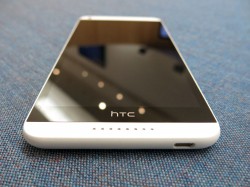
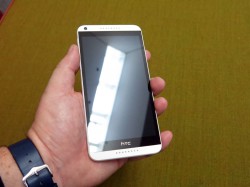

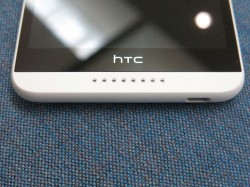
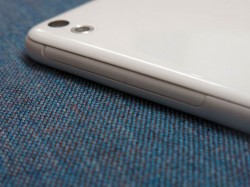

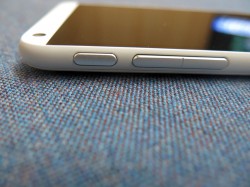
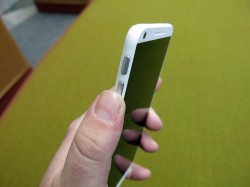


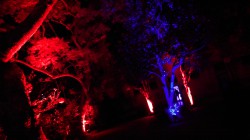
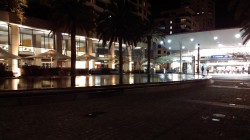




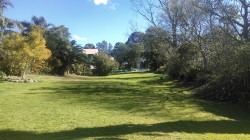



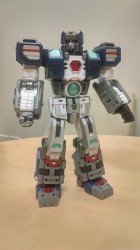




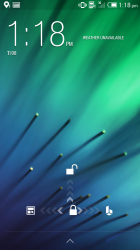
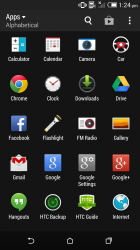



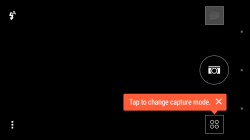

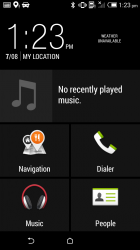
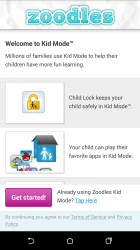
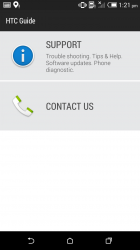

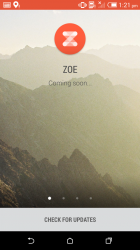
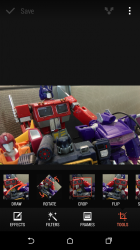



Does it have NFC?
Indeed it does.
Anyone know what the lik red car is? Bugging me
According to an article on the International Business Times
HTC Android L Update Schedule: Devices to Receive the Android L Revealed
http://au dot ibtimes dot com/articles/557783/20140702/htc-android-l-update-schedule-devices-receive.htm
leaked info for the HTC roadmap for upgrades to Android L, includes the 816, confirms no KK 4.4.3 or 4.4.4 for the 816. However the leaked roadmap also shows that assessment for L for the 816 will be being done sometime over the course of October through December.
edit: I found this news item when I was hunting on Google to see if there was any GPE ROM for the 816.